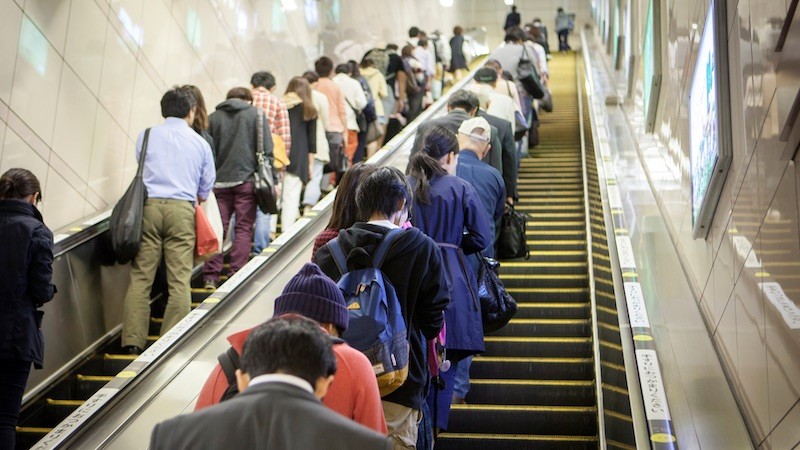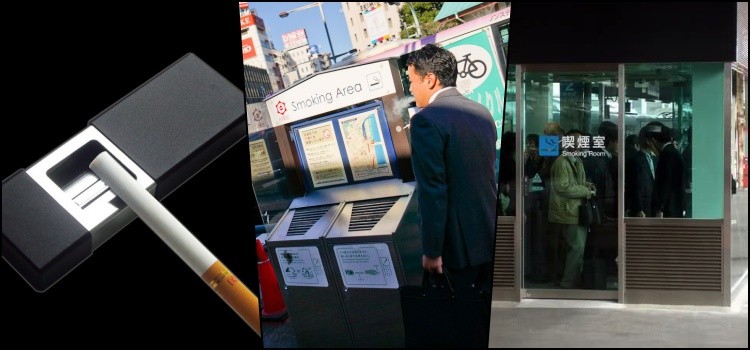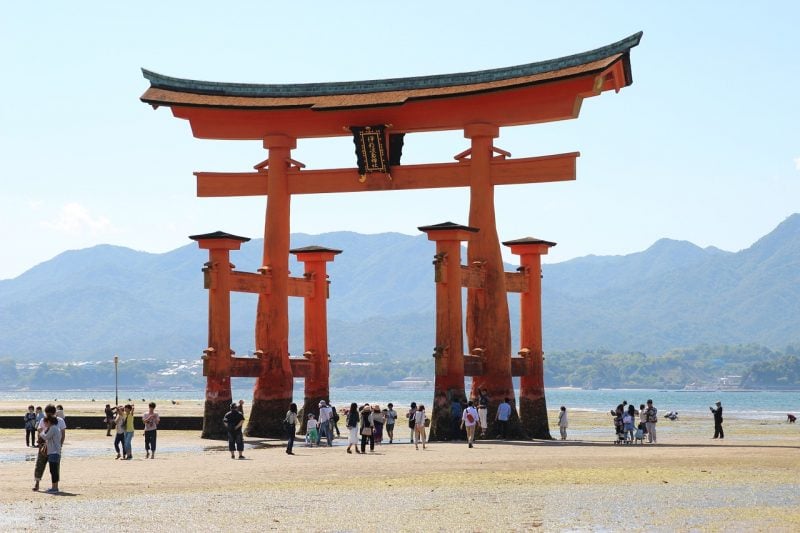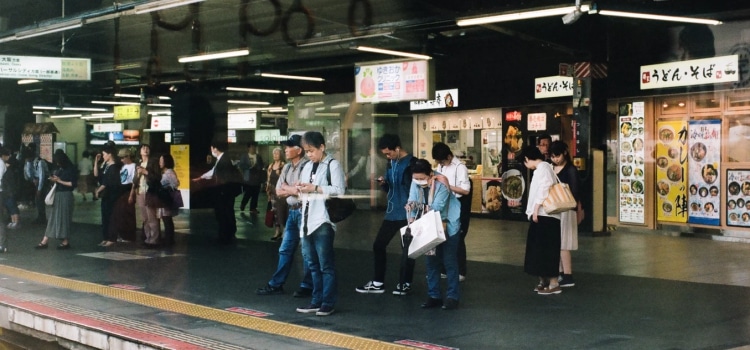Japan is known for its organization and mutual respect in public spaces, traits that are deeply ingrained in the country's culture. These practices, although they may seem strange to first-time visitors, are simple to follow and help maintain harmony. Respecting them shows appreciation for the local culture and makes coexistence more pleasant for everyone.
In this article, we present some of the main rules and customs in Japanese public spaces, covering both widely known practices and those that may go unnoticed. With these tips, you will be prepared to explore Japan in a respectful and conscious manner.
Table of Content
1. Positioning on Escalators
On the escalators in Japan, it is common practice to leave one side clear for busy people. In areas like Tokyo (Kanto), passengers stand on the left side, while the right side is reserved for those in a hurry. On the other hand, in Kansai, like Osaka, the positions are reversed: locals stand on the right side and leave the left side free.
If in doubt, observe the behavior of the people around you and follow the pattern. This rule helps maintain the flow in busy spaces, something essential in a country with a high population density.

2. Elevator Etiquette
When using elevators in Japan, some courtesy norms are universally followed. The person closest to the buttons takes on the role of operator, keeping the door open for others to enter or exit and, if necessary, pressing the buttons for the requested floor.
In addition, it is considered polite to avoid prolonged or noisy conversations inside the elevator, especially in commercial buildings. Simplicity and silence help to respect the shared space.
3. Behavior in Public Restrooms
Use of "Otohime"
In women's restrooms, it is common to find devices known as Otohime, which emit sounds of flushing to mask bodily noises. This practice reflects the concern of not causing discomfort to others present in the environment. Simply activate the sensor or press the button to start the sound.
Hygiene and proper disposal
Additionally, it is essential to dispose of personal hygiene items only in appropriate places, such as specific trash bins. Following these guidelines helps keep the restrooms clean and organized.

4. Care for Umbrellas
In the rainy season, the use of plastic bags to cover umbrellas is widely adopted. These bags, available at store and office entrances, help prevent water from dripping and wetting the floor. Alternatively, reusable cases can be purchased at convenience stores for affordable prices.
When leaving the location, remember to dispose of the bag in the appropriate trash or reuse it for future occasions.
5. Smoking in Public Areas
Smoking on the streets is restricted in many Japanese cities. There are designated smoking areas, usually located near train stations or in designated spaces on the streets. Respecting these zones is essential to avoid fines and disturb pedestrians.
Although smoking is allowed in some bars and restaurants, Japan is adopting stricter policies regarding passive smoking. Always check if the place allows smoking before lighting a cigarette.

6. Avoid Eating While Walking
Although it is not illegal to eat while walking, this practice is considered rude in many places. Japanese streets, especially in large cities, are extremely clean, and eating while walking can result in waste or crumbs on the ground.
If you need to have a quick snack, look for an appropriate area, such as benches in parks or spaces near convenience stores, where there are often trash cans available.
7. Use of Cell Phones in Public Transport
In public transportation, it is expected that you put your phone on silent mode and avoid making calls. If it is absolutely necessary to answer a call, keep the conversation brief and discreet, or wait until you disembark to return the call.
This practice ensures that other passengers can travel in silence, something highly valued in Japan.

8. Breastfeeding in Public
Breastfeeding in public is a sensitive topic in Japan. Although it is not illegal, the practice is culturally regarded as a private moment. Therefore, many mothers prefer to use designated spaces, such as breastfeeding rooms available in shopping malls, train stations, and large department stores.
These spaces are equipped with comfortable chairs, changing tables, and even microwaves to warm bottles. If there isn't a nearby room, using a shawl or cover to cover breastfeeding is a discreet solution and generally well accepted.
9. Silence in Religious Places
Japan has a rich spiritual tradition, and visiting Shinto and Buddhist temples is a fascinating experience. However, it is important to remember that these places are considered sacred and deserve respect. Some practices you should observe include:
- Speak in a low voice or keep silent.
- Avoid exaggerated gestures of affection, such as hugs or kisses.
- Remove your shoes before entering temples or specific areas, if requested.
- Photograph only when permitted, as some areas prohibit the use of cameras.
Before performing rituals like washing hands or ringing bells, observe the behavior of the locals to follow the steps correctly.

10. Careful with the Use of Trash Bins
Public trash bins are rare in Japan, but that is not an excuse to dispose of waste improperly. People often take their trash home or dispose of it at recycling stations near convenience stores. Furthermore, waste is meticulously separated:
- Burnable (paper, food scraps).
- Non-combustible (plastics, metals).
- Recyclables (glass, PET bottles).
If you don't know where to dispose of a certain item, take it with you until you find a proper trash can.
11. Behavior on Public Transport
In addition to not using the phone for calls, other etiquette rules on public transport include:
- Give priority: Priority seats are reserved for the elderly, people with disabilities, pregnant women, and passengers with small children. Even if the train is empty, it is polite to avoid these seats if you do not belong to these groups.
- Avoid large backpacks: Use your hands to carry backpacks or large bags, reducing the space taken up and avoiding bumping into others.
- Respect the silence: Conversations, even discreet ones, should be kept at a low volume.

12. Photographing People and Places
In Japan, asking for permission before taking photos of people is essential, especially in less touristy areas. Even in public places, such as markets or busy streets, photographing strangers without consent can be considered rude.
For historic buildings or sites, check if there are restrictions on photography. Some places allow external photos but prohibit recordings inside.
13. Avoid Wearing Shoes in Indoor Areas
In many homes, traditional inns (ryokan) and some restaurants, it is necessary to take off your shoes before entering. Usually, there are slippers available for indoor use. Make sure to:
- Take off your shoes when entering and organize them in the designated areas.
- Do not use bathroom slippers in other parts of the house or establishment.
- Keep the socks clean and in good condition, as the feet are visible.

14. Avoid Loud Conversations in Restaurants
Even in leisure moments, such as in izakayas (bars) or restaurants, it is important to avoid behaviors that may disturb others. Speaking loudly, laughing excessively, or making excessive noise is considered impolite.
Additionally, avoid altering the layout of tables or chairs without the waiter's authorization. In Japan, the arrangement of furniture is designed to ensure maximum comfort and efficiency.
15. Avoid Prolonged Gazes
Maintaining direct eye contact for long periods can be interpreted as uncomfortable or even rude in some situations. This is especially true in crowded environments, such as public transport or queues. It is preferable to keep a neutral gaze or focus on a nearby object.
